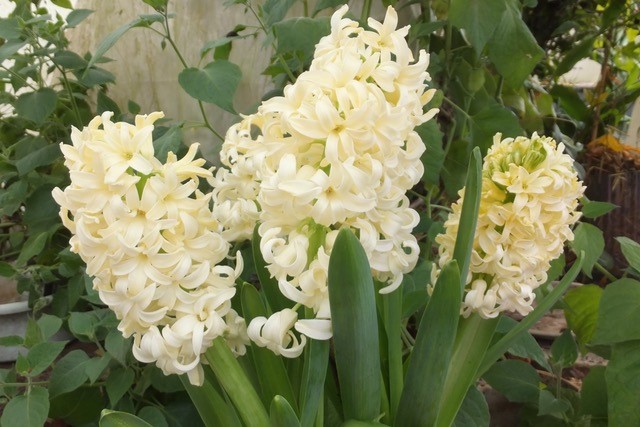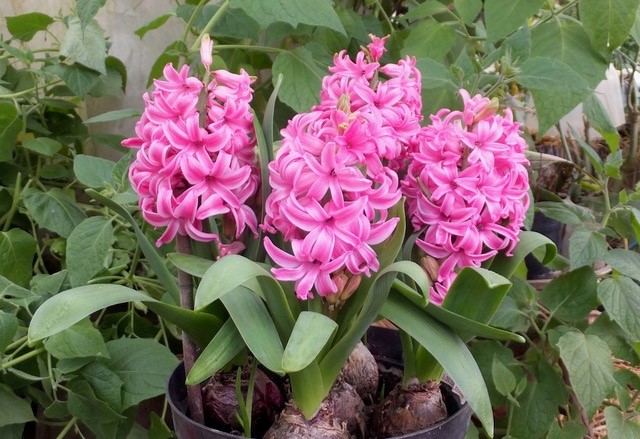
Hyacinths huge fat spikes of waxy perfumed blooms are way larger than nature provided and a triumph of both breeders’ and growers’ skill. Then to also persuade Hyacinths into bloom way out of their natural season is another achievement in itself.
The original of our florists or Dutch Hyacinths were until the late 16thC little known spindly natives of the Middle East, mostly blue and white, but with that gorgeous balsamic scent. By 1740 pink and red varieties had been bred and by 1760 a yellow. The Dutch improved the size and developed commercial methods for preparing bulbs making these easier to grow, and so to sell, out of season.
Arriving along with glasshouses and glazed windows these cheerfully coloured sweetly perfumed Hyacinths soon became most widely grown. Especially once bowls could be had in bloom under cover all winter through till spring.
As with so many plants you could start with seed. However Hyacinths are so inexpensive they’re often discarded after flowering. (They can be planted out when they’ll degenerate to smaller spikes remarkably like Bluebells.) Excellent named varieties are sold as flowering size prepared bulbs. I suggest you start with a selection and plant these half buried in pots of used potting compost. This does not need be fertile as the bulbs only need water.

Indeed you may remember folk growing bulbs in special shaped vases of water kept sweet with charcoal. Instead you could use a jam jar as long as you allow just the very bottom of the bulb to touch the water.
Start bulbs making roots, leaves and fat shoots in a cool dark place (9°C) for two months or so. You need water carefully and constantly and inspect regularly. Once flower spikes show an inch/ 5cm length above the leaves cover those spikes with black light excluding paper bag hoods and bring the plants into a warmer light place (12°C). Keep the spikes covered for the next fortnight or so to draw them up before your grand uncovering.
Continuous constant moisture is crucial and your blooms will last longer still when kept cooler than warmer. After the blooms finally wither keep watering and start feeding till the leaves wither, then dry off bulb till wanted again.
As well as three or four dozen varieties commonly available there are many lost ones and a half dozen or so similar species for the enthusiastic collector.


